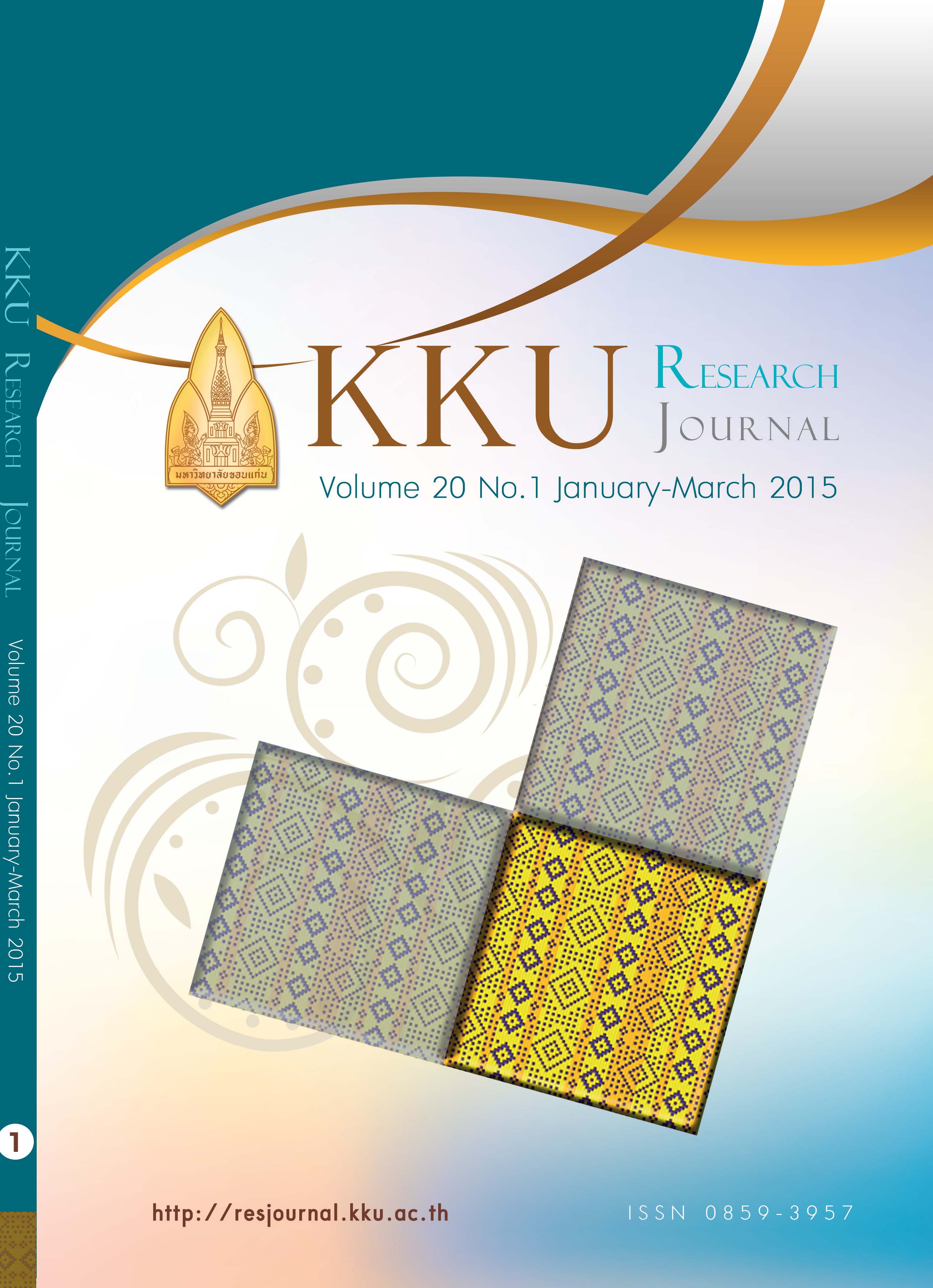Comparison of solid waste composition between regular and weekend programs at Nakhon Ratchasima Rajabhat University
Main Article Content
Abstract
At present, solid waste management is one of core environmental problems in Thailand, particularly establishment for education. According to Nakhon Ratchasima Rajabhat University (NRRU), one type of higher education institutions provides weekend programs with rapid increase for the number of students. In addition, Nakhon Ratchasima as a province has produced the highest quantity of solid waste in the northeastern region and is located at the center of numerous higher-education institutions offering weekend programs. The objective of this study was to compare the solid waste composition and accuracy of solid waste separation in the Solid Waste Separation Project proceeded by NRRU in both regular and weekend programs. The results of the study showed that the quantity of solid wastes in the university generated during various activities from regular and weekend programs was 2,332.50 and 1,695.28 kilograms/day, respectively. With respect to the size of the population in the weekend program and the regular program respectively, the solid waste generation was 0.141 and 0.278 kilograms/person/day. It indicated that the solid waste generation of the weekend program per person per day was higher than the regular program at 97.2%. The first three components of solid waste in both the regular and weekend programs were found in food waste, plastics and paper representing 84.10%, 7.45%, and 4.22% respectively in the regular programs and 73.29%, 12.02% and 5.33% respectively in the weekend study programs. On the investigation of accuracy of solid waste separation at the university, it was sorted by the designated color of bin in both regular and weekend programs. The average accuracy was found at 0.542% and 1.26% for non-biodegradable waste, 16.45% and 13.10% for organic waste and 11.03% and 11.61% for recycled waste respectively and (N/A) for Hazardous waste in the regular programs or low accuracy at 0.066% in the weekend programs.
Article Details
References
[2] Harajyoti Mazumdar, Pranjal Rajbongshi, Pinku Kalita, Mridusmita Das, Silpishikha Mahanta, and Debabrata Choudhury, A significant and comparative analysis on solid wastes on different area of Kamrup distric, Assam, European Journal of Experimental Biology; 2011. pp. 109-114.
[3] Kalaya Vanichakarnbancha, Statistical analysis: Statistics for management and research. Bangkok: Chulalongkorn University; 2011. pp. 22-26. Thai.
[4] Kotler, .P. & Gary Armstrong (2010), Principles of Marketing, 13th Edition Pearson Education. Inc Upper Saddle River, New Jersey U.S.A.; 2010. pp. 249-251.
[5] National Economic and Social Development Board Office of the Prime Minister, The Eleventh National Economic and Social Development Plan B.E. 2555 - 2559 (A.D. 2012 – 2016). National Economic and Social
[6] Pollution Control Department, Survey and Analysis The composition of municipal waste across the country; 2013. pp. 220-222. Thai.
[7] Tchobanoglous, G., Theisen, H. and Vigil, S.A. Integrated Solid Waste Management: Engineering Principles and Management Issues. McGraw-Hill; 1993. pp. 58-61.

